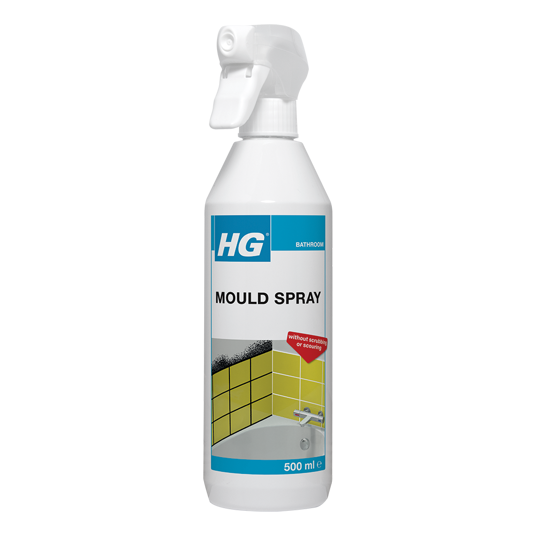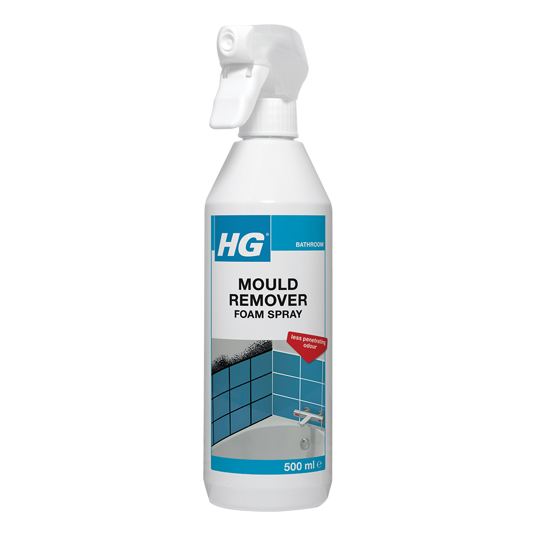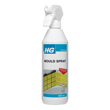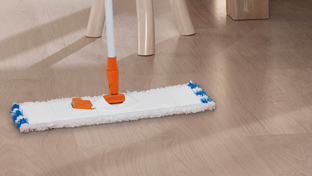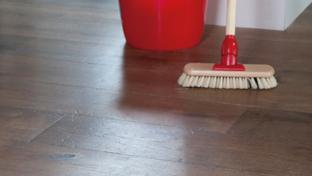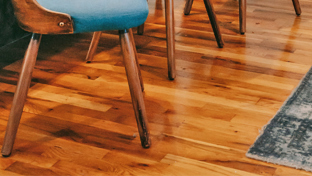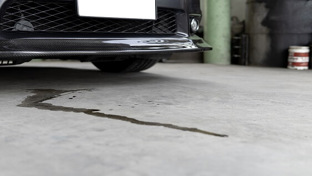Remove mould from the walls with HG mould spray
 With HG mould spray you can remove mould from the wall directly, inside and outside. You can see a clear result within 30 minutes. HG mould spray is self-acting and suitable for tiles, silicone grout and plaster. With 500 ml you can treat 2 to 3m2 wall surface and 6 to 8m2 tile grout. HG mould spray is also available as a mould remover foam spray. This product has a less penetrating odour, it can be trained even more precisely on the mould and splashes less too of course. HG mould spray can also be used for your swimming pool or sauna.
With HG mould spray you can remove mould from the wall directly, inside and outside. You can see a clear result within 30 minutes. HG mould spray is self-acting and suitable for tiles, silicone grout and plaster. With 500 ml you can treat 2 to 3m2 wall surface and 6 to 8m2 tile grout. HG mould spray is also available as a mould remover foam spray. This product has a less penetrating odour, it can be trained even more precisely on the mould and splashes less too of course. HG mould spray can also be used for your swimming pool or sauna.
This is how you remove mould from the wall in 3 steps:
- Spray the surface with one of the HG mould cleaners from a distance of 3 to 5cm.
- Leave the mould remover to absorb for 30 minutes.
- Clean the mould off the wall with water and a sponge.
What's best to avoid when you have to remove mould from a wall?
 What's best to avoid when you have to remove mould from a wall?
What's best to avoid when you have to remove mould from a wall?
Various tips are shared on the internet. These days, there is strong advice against using these DIY products for mould on the wall.
1. Remove mould with soda
Removing mould with soda is a popular solution. Unfortunately, baking soda does not work on mould.
2. Do not use vinegar to remove mould on the wall
Like baking soda, vinegar does not work on mould either. It is often recommended because vinegar has a low pH value. It has actually never been proven that it removes mould too. Therefore, it is better that you do not use vinegar for mould on the wall.
3. Do not use bleach to remove mould
Bleach is also recommended frequently. However, do not use bleach. As bleach often contains chlorine, it can destroy mould in theory. However, as it has no official approval, the effectiveness of the product on mould has never been tested. Be careful when you use bleach to remove mould from a wall.
Always use a product with official approval for mould. Like HG's powerful mould cleaners, for example.
Prevent mould on the wall
Prevent mould on the wall. Here are two ways for tackling the cause of mould on the wall.
- Ventilate
Mould in a house is solved with sufficient ventilation. Ventilation is important after cooking, showering or sleeping. Open sufficient ventilation grills and small hopper windows. They may stay open 24 hours a day. Fresh air disappears within 30 minutes, causing damp and dust to accumulate in a home. Opening a window is not enough. Ventilation ensures that damp and dirty air is discharged outside. This decreases the chance of dampness and mould in the home and you create a mould-free home. - Central mechanical ventilation
Alternatively, you can choose central mechanical ventilation. The used air is extracted from the kitchen, bathroom or the toilet. Fresh air is taken in through the grills in your frames, windows or sliding doors. This decreases the chance of mould in the home and you have clean and healthy walls.
Frequently Asked Questions about removing mould from walls
How is mould formed on walls?
Mould on walls comes from damp or leaks through the wall.
Is mould on the wall harmful?
Mould on the wall is harmful to the wall, the furniture and your health.
How do you treat mould on a wall?
You can treat mould with HG mould spray or HG mould remover foam spray.
What to do about mould on the wall?
You can remove the mould with HG mould spray or HG mould remover foam spray. It is also important to ventilate your house properly, to reduce the possibility of mould on the wall.


